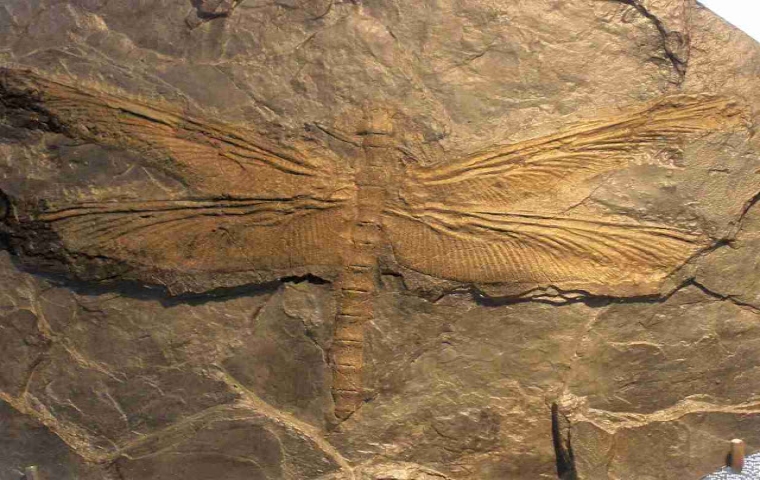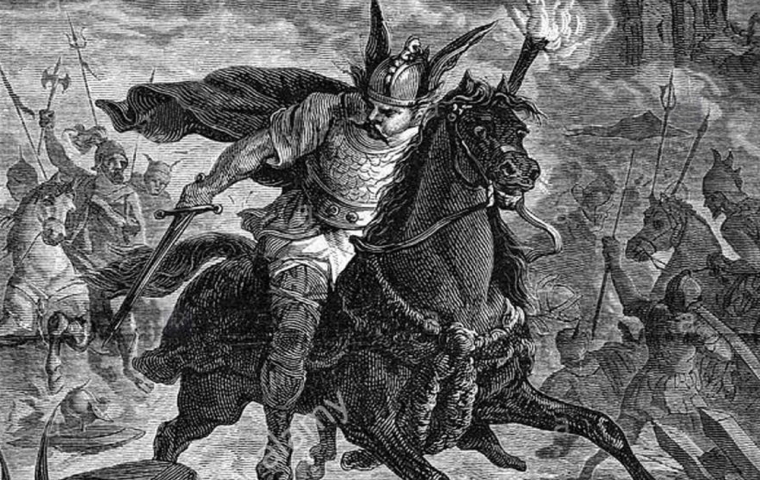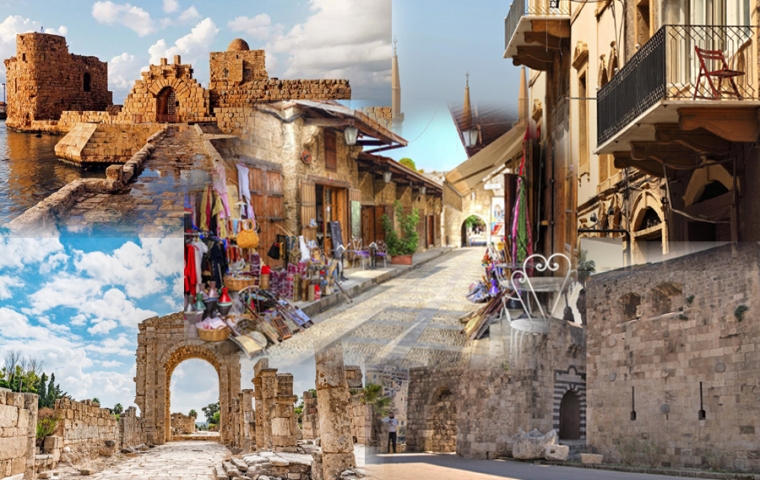10 Largest Castles in the World
In this particular article, the ranking of the castles are based on how much area they cover on the ground and not judged on height and number of rooms.
In its definition, a castle is "a large building, typically of the medieval period, fortified against attack with thick walls, battlements, towers, and in many cases a moat."
Most people would agree that Moscow Kremlin is not exactly a castle but the Forts in India are. In this particular article, the ranking of the castles are based on how much area they cover on the ground and not judged on height and number of rooms.
10. Edinburgh Castle (35,737 square meters)
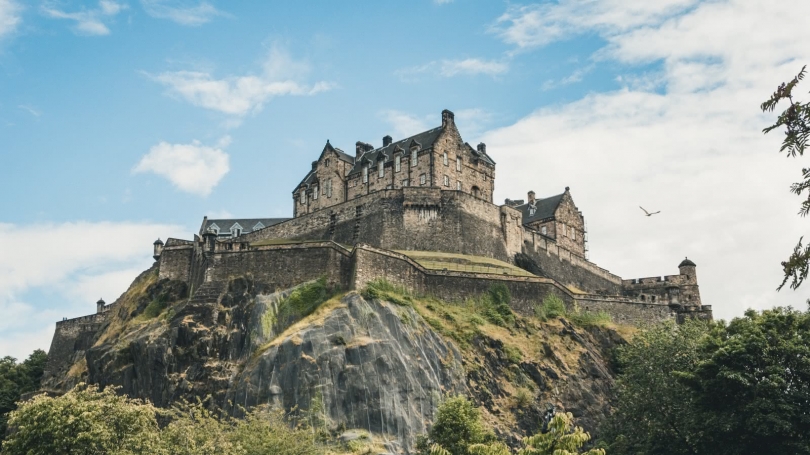
Situated on an extinct volcanic crag, Edinburgh castle dominates the skyline of the city of Edinburgh in Scotland. Archaeologists have established human occupation of the rock since at least the Iron Age, although the nature of the early settlement is unclear.
It was twice captured by invading British forces and twice reclaimed by the Scots. The castle was later fortified with a giant cannon named Mons Meg, which can still be viewed by tourists today.
9. Citadel of Aleppo (39,804 sqm)
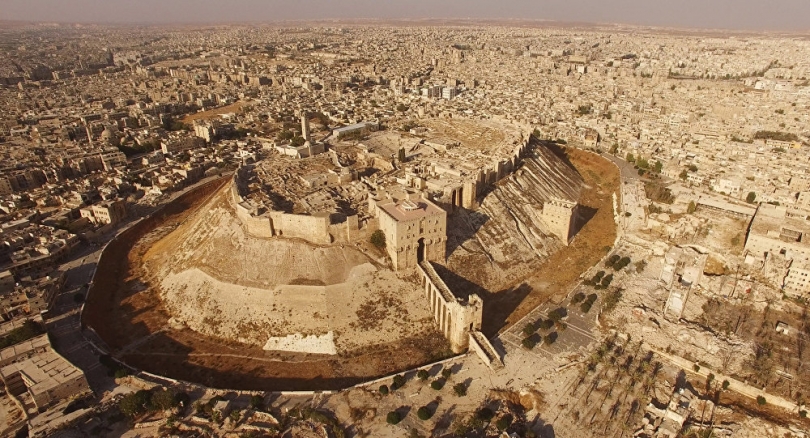
The Citadel of Aleppo is a large medieval fortified palace in the centre of the old city of Aleppo, northern Syria. It is considered to be one of the oldest and largest castles in the world.
Usage of the Citadel hill dates back at least to the middle of the 3rd millennium BC. Subsequently, occupied by many civilizations including the Greeks, Byzantines, Ayyubids and Mamluks, the majority of the construction as it stands today is thought to originate from the Ayyubid period.
8. Himeji Castle (41,468 sqm)
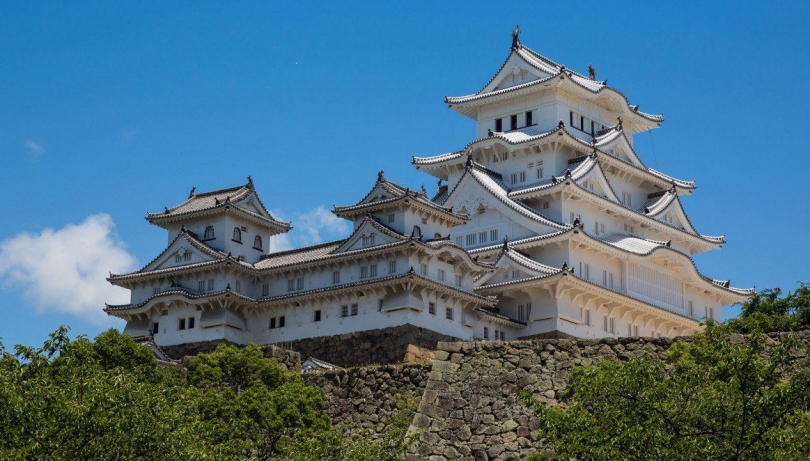
Himeji Castle is a hilltop Japanese castle complex situated in the city of Himeji which is located in the Hyōgo Prefecture of Japan. The castle is regarded as the finest surviving example of prototypical Japanese castle architecture, comprising a network of 83 rooms with advanced defensive systems from the feudal period. The castle is frequently known as Hakuro-jō or Shirasagi-jō ("White Egret Castle" or "White Heron Castle") because of its brilliant white exterior and supposed resemblance to a bird taking flight.
Himeji Castle dates to 1333, when Akamatsu Norimura built a fort on top of Himeyama hill. The fort was dismantled and rebuilt as Himeyama Castle in 1346, and then remodeled into Himeji Castle two centuries later.
7. Buda Castle (44,674 sqm)
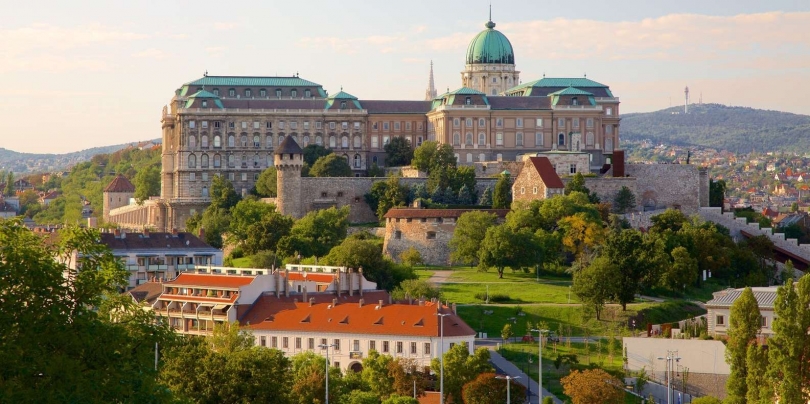
Buda Castle is the historical castle and palace complex of the Hungarian kings in Budapest. It was first completed in 1265, but the massive Baroque palace today occupying most of the site was built between 1749 and 1769. The complex in the past was referred to as either the Royal Palace or the Royal Castle.
Today, the castle has a mixture of architectural styles, ranging from Gothic to Baroque, being invaded repeatedly, followed by rebuilding in the style of the period.
6. Spis Castle (49,485 sqm)
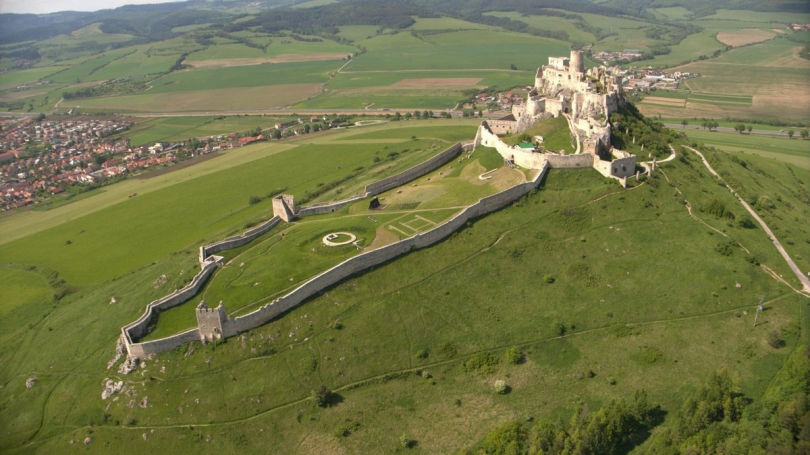
Spis Castle in eastern Slovakia is one of the largest Medieval castles in central Europe. The main body of the castle was fortified by stone walls in the first half of the 13th century and the lower courtyard in the middle of the 15th century.
It was the political, administrative, economic and cultural centre of Szepes County[1] of the Kingdom of Hungary. Before 1464, it was owned by the kings of Hungary, afterwards (until 1528) by the Zápolya family, the Thurzó family (1531–1635), the Csáky family (1638–1945), and (since 1945) by the state of Czechoslovakia then Slovakia.
5. Hohensalzburg Castle (54,523 sqm)
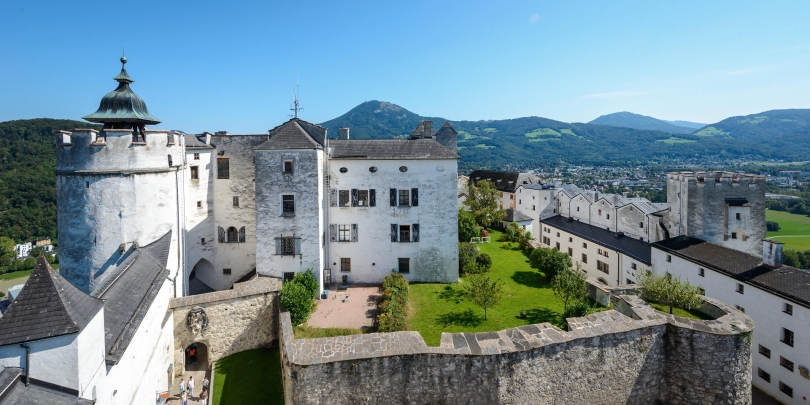
The Hohensalzburg Castle is located in Salzburg; an Austrian city. It is one of the largest castles in Europe and it is also one of the largest ones to be preserved that efficiently. The Hohensalzburg Castle was constructed in 1077. It was expanded exponentially between the years 1495 and 1519. Not many alterations or expansions were made after that period.
The sturdy fortress served its purpose beautifully, and managed to never fall to enemy troops. This eye-catching Austrian landmark strikes a powerful silhouette in the skyline of Salzburg and welcomes visitors to a number of museum exhibits to learn about the lives of the archbishops. Guests can also take their time appreciating the exterior architecture of the Hohensalzburg Castle, which has remained largely unchanged from its historic roots.
4. Windsor Castle (54,835 sqm)
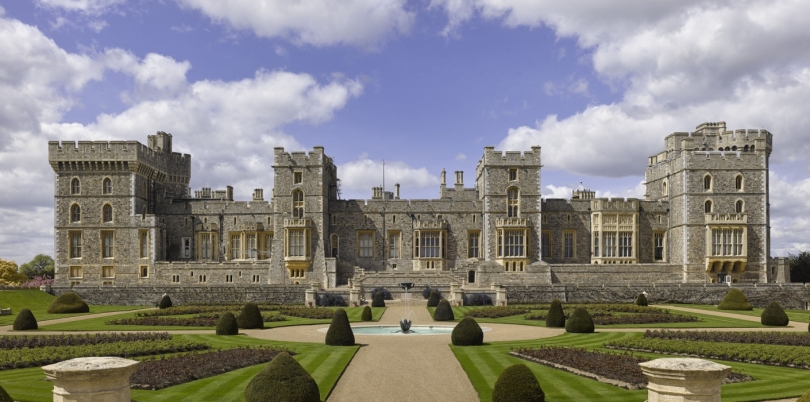
Windsor castle is often referred to as the largest inhabited castle worldwide, and is certainly the largest in England. It’s one of the official residences of the Queen of England, who spends many of her private weekends and vacations there. The upper ward, where the private residential apartments are located, is also home to the esteemed royal library.
The library’s contents include invaluable drawings by classical masters such as Leonardo da Vinci, Raphael, and Michelangelo. Some contents of the royal library were lost to fire in 1992, but most pieces were safely recovered and the damaged parts of the castle were restored.
3. Prague Castle (66,761 sqm)
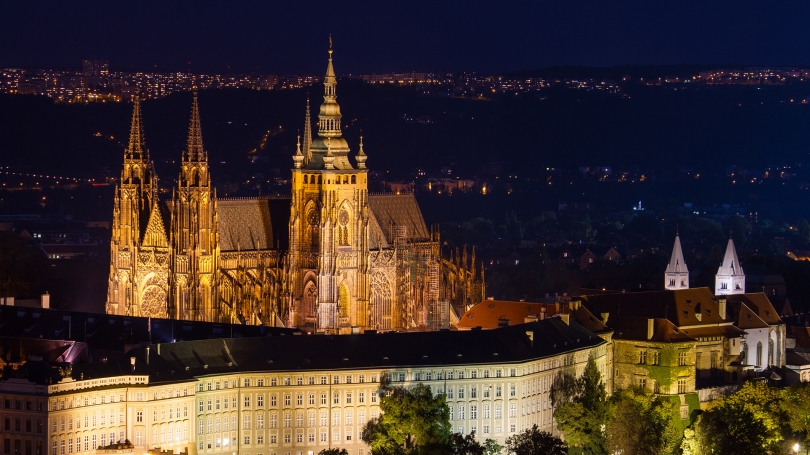
Prague Castle is the largest coherent castle complex in the world according to the Guinness Book of World Records. The first stone building of this glorious structure was the Church of the Virgin Mary, though only sparse remnants of the original structure remain to this day.
It is the official office of the President of the Czech Republic. The castle was a seat of power for kings of Bohemia, Holy Roman emperors, and presidents of Czechoslovakia. The Bohemian Crown Jewels are kept within a hidden room inside it.
2. Mehrangarh Fort (81,227 sqm)
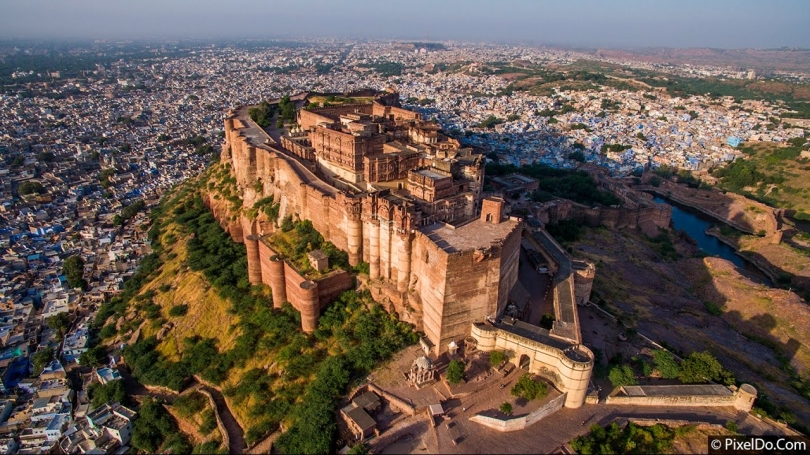
Mehrangarh or Mehran Fort, located in Jodhpur, Rajasthan, is one of the largest forts in India. Built in around 1459 by Rao Jodha, the fort is situated 410 feet (125 m) above the city and is enclosed by imposing thick walls. Inside its boundaries there are several palaces known for their intricate carvings and expansive courtyards. A winding road leads to and from the city below. The imprints of the impact of cannonballs fired by attacking armies of Jaipur can still be seen on the second gate. To the left of the fort is the chhatri of Kirat Singh Soda, a soldier who fell on the spot defending Mehrangarh.
1. Malbork Castle (143,591 sqm)
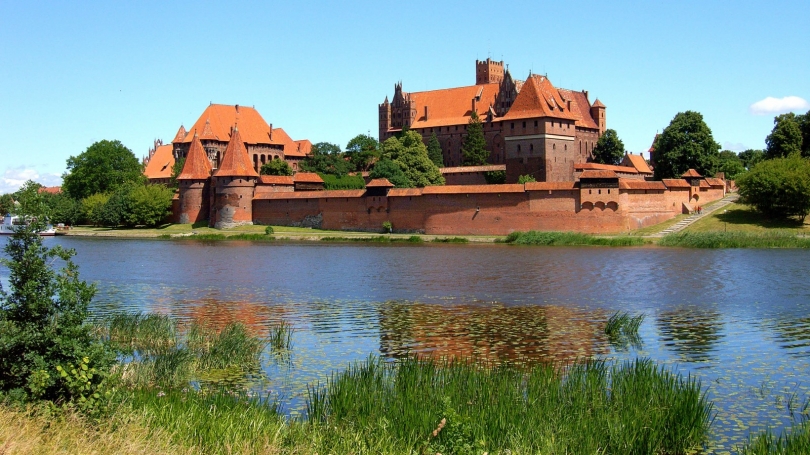
The Castle of the Teutonic Order in Malbork is a 13th-century Teutonic castle and fortress located near the town of Malbork, Poland. It is the largest castle in the world measured by land area and a UNESCO World Heritage Site.
It was originally constructed by the Teutonic Knights, a German Catholic religious order of crusaders, in a form of an Ordensburg fortress. The Order named it Marienburg in honour of Mary, mother of Jesus. In 1457, during the Thirteen Years’ War, it was sold by the Bohemian mercenaries to King Casimir IV of Poland in lieu of indemnities and it since served as one of the several Polish royal residences and the seat of Polish offices and institutions, interrupted by several years of Swedish occupation, and fulfilling this function until the First Partition of Poland in 1772. From then on the castle was under German rule for over 170 years. Following Germany's defeat in World War II in 1945, the land was assigned to Poland by the Allies.
Heavily damaged, the castle was renovated under the auspices of modern-day Poland in the second half of the 20th century and most recently in 2016. Nowadays, the castle hosts exhibitions and serves as a museum.
The Largest Insect Ever Existed Was a Giant 'Dragonfly'
Weird History 'Meganeura' Was A Prehistoric Dragonfly With A Two-Foot Wingspan.
What if Attila Survived his Wedding Night?
What if Attila hadn't died in 453 AD? How his survival would have transformed the fate of the Roman Empire and all of Europe?
What is the greatest Lebanese city throughout history?
Among Lebanon's historic cities, which city has the greatest status in history?




